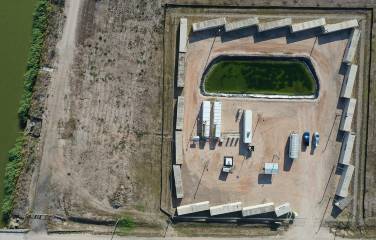Consider These Tips to Find Good Value in Engineering Proposals
Obtaining good value in civil engineering fee proposals does not always mean the lowest cost proposal or “bid” is the best alternative.
A value-driven (rather than a cost-driven) approach to engineering proposals will help your project lead to fewer problems and higher returns.
These five considerations can assist clients with finding good value when soliciting design proposals:
1. Ensure Adequate Staffing
It’s important to remember that projects have their best chance for success when staffing and collective resources are appropriately matched with the project scope.
Consider the needs and size of your project: would a smaller team or larger team work better?
What small teams do best: Firms with smaller teams are often able to offer the lowest cost fee on proposals. They also offer more agility and quicker communication on projects. Cost savings, while certainly important, can pose their own challenges if your project needs will be greater down the road.
Smaller firms typically focus on a few projects at a time and can be prone to becoming overcommitted when their workload exceeds their capacity.
What large teams do best: Larger staffs, on the other hand, can usually navigate heavier workloads, especially in the event of unanticipated hurdles or multiple changes. Teams with more manpower may experience more communication delays, but can more easily manage project timelines — thus completing projects more quickly.
Overall, the ideal team size often depends on the specific project, complexity of work and anticipated needs.
The best approach is to strike a balance in staffing best fits the project’s needs and risk tolerance.
2. Consider the Impact of Time on Costs
The adage “time is money” holds particularly true in the execution of civil engineering projects.
The pitfall: While lower-cost engineering fees might seem appealing, in some cases they may lead to understaffed projects and missed deadlines if the project requires greater effort.
You must consider if your project size matches the firm and team’s capabilities to execute on it on time and on budget. If not, it could result in delays, which drive up interest and other time-sensitive carrying costs that ultimately make the project more expensive.
There is always a risk in saving money with lower fees. Taking this approach could mean offsetting cost savings with more interest and other expenses, in the event a project timeline is increased due to inadequate staffing.
3. Evaluate the Expertise of Personnel and Quality of Resources
It is important to ensure that a firm employs highly trained professionals who specialize in the right project type for your needs.
The following are good questions to ask a firm when evaluating their expertise:
-
-
- What are their relationships with the permitting authorities like?
- Do they have experience successfully navigating their approval processes?
- Does the firm offer all the services you need for the project (like surveying, environmental, H&H, traffic studies, construction administration, etc.), or will they subcontract to various firms?
-
Having a single point of contact managing in-house services and holding teams accountable can greatly improve scheduling and reduce delivery timelines.
Check your resource quality! Advanced tools enhance precision, efficiency and most importantly, speed to market of the completed project. Examples include:
-
-
- AI-based design software
- Aerial LiDAR
- Building Information Modeling (BIM)
- Geographic Information Systems (GIS)
-
4. Invest in Adequate Professional Liability Insurance
Professional liability insurance is essential for covering errors and omissions on a larger scale.
Don’t fall victim to this: Many firms carry inadequate or no insurance coverage, putting you at risk of millions of dollars in potential claims. Make sure the engineering firm in consideration has sufficient insurance coverage that matches your risk tolerance.
Having adequate professional liability coverage not only reflects a firm’s commitment to professionalism and responsibility, but also protects you/client from potential financial losses arising from errors, omissions and other unforeseen issues.
5. Compare Proposal Scopes Thoroughly
It is imperative to compare proposals comprehensively.
Scopes can vary widely, making “apples-to-apples” comparisons difficult. Instead of just scrolling to the bottom-line fee and making a decision based on the final total, it is highly recommended to carefully review every proposal line by line. It is good to ensure all required elements are included.
Important Tip: The best proposals provide a FULL scope that goes beyond the bare minimum requirements listed in an RFP. Also be sure to look for exclusions, as these can alter engineering fees by tens or even hundreds of thousands of dollars.
In the end, the lowest “written” fee may not always be the lowest “actual” fee.
Clients can make informed decisions and select civil engineering firms that offer the best ROI for their projects by following these five tips. Looking beyond the price tag and thinking about the long-term implications will help set you up for successful project outcomes.
Halff is here to help! We bring together interdisciplinary solutions and services that improve lives and communities by turning ideas into reality. We would love to hear your project’s specific needs and discuss how Halff can address them.
Contact us today to get started!
Authored by Land Development Practice Leader Greg Shipley, PE (gShipley@halff.com).













